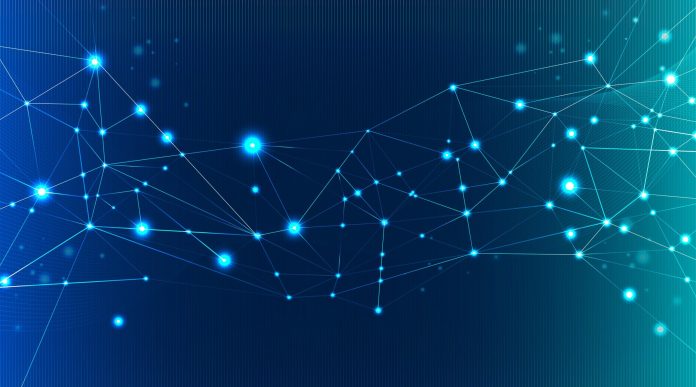Over the past decade, the nature of public events has shifted to a different dynamic. Once spontaneous, hyped with natural grassroots expressions of community energy, many gatherings today feel more orchestrated. This shift piques new avenues of exploration: how do crowd dynamics really affect participants’ energetic states? Why do some events pulsed with real coherence, while others fell strangely bland despite their surface success? By applying combined insights from quantum cognition and energetic field theory, we can explore these patterns through a scientific yet accessible lens: revealing why certain collective energies amplify and resonate, while others fragment and dissipate.
Scientific principles behind group energy can offer powerful tools for unpacking layers of group dynamic, namely: McTaggart et al. Energetic Entrainment & Coherence Fields, and The Hawthorne Effect. Lynne McTaggart and collaborators have explored how human intention and physiological states can entrain and sync up with those around us. When groups of people enter resonance, they create coherence fields: measurable energetic environments where emotions, heart rhythms, and even brainwaves align. In such states, individuals feel connected, empowered, and grounded in shared experience and emotion. When coherence is missing, participants often report feeling fragmented, overstimulated, or emotionally flat, even in large vibrant crowds. In other words, the field exists – but it’s incoherent. As for the Hawthorne Effect, it was drawn from early workplace studies. It suggests that people may change their behaviour when they know they’re being watched. In curated or heavily-observed events, participants often withhold genuine expression, or showcase desired behaviour. The result is a “synthetic” collective field, dampened by self-monitoring and external control – antithetical to spontaneous coherence.
If we explore four contemporary event types and how they affect crowd coherence, either amplifying or diffusing energy, the following apply:
- Ticketed Urban Festivals. Once open community events, many festivals now operate on pre-event purchase ticketing models. While this allows for crowd management, curated programming, and predictive outcome, it also introduces energetic fabrication. Attendees may include genuine punters mixed with passive consumers, observers, or disconnected onlookers – blurring the once-coherent intent. The result: the energy may rise in isolated peaks but never amalgamates into a unified field.
- Nightlife with High-Attraction Nodes. Modern nightlife often revolves around celebrity DJs, branded installations, or influencer “nodes.” These focal points act like gravity wells – drawing in energy and attention. However, instead of a coherent field, what emerges is a patchwork of localised peaks with minimal emotional carryover. Energy becomes siloed rather than shared.
- Coupling & Collision Experiments. Some events experiment with guided interactions – pairing strangers in installations or dance environments to simulate emotional or social “entanglement”. These are intended to mimic natural coherence but in factual, lack organic alignment. The analogy is lab-grown quantum pairings with incompatible spin states, the results often lack staying power. Interaction occurs, coherence enabled, but entanglement does not exist.
- Controlled Protest Staging. Activist and political events naturally hold strong, potent emotional state of the highest energy. Yet when these are overly choreographed, devised, or visually overexposed, the raw power dissipates. Instead of catalysing transformation, the crowd recites well-versed slogans and movements – generating resonance loops without amplitude.
The Conundrum of “Masked” Energies
This brings us to a critical insight: attempts to mask or blend mismatched energies risk undermining the intended result.
The Fluctuation Gap and Incoherence. Picture a celebration designed to uplift a specific group, into which large numbers of participants enter without shared intention, emotional or historical resonance. Even if well-meaning, these mixed energies introduce fluctuation gaps: disturbances in the field that prevent stable coherence. The event may still be visually impressive, but the felt experience remains diffuse and incoherent.
Quantum Coherence and Entanglement. Why mismatch matters can be explored through the parallel of how quantum theory gives us a fitting metaphor. In physics, quantum coherence refers to the phase connection among particles, and entanglement is the intangibly deep, genuine connection formed between particles with authentic compatibility (matter/antimatter) or natural symmetry. Though still under exploration, it is generally accepted that coherence and entanglement are interdependent, i.e. entanglement occur following a coherent phase connection. Translating this to human gatherings: when individuals or energies lack shared orientation or internal symmetry, their entanglement fails. The attempt to force coherence through artificial alignment or visual uniformity results in instant decoherence. The energy drops, the field disbands. This explains why events with mismatched energetic pairings (emotional, cultural, spiritual, or biological) struggle to generate real and lasting transformation. The system can stage proximity, but not resonance. Despite these patterns, engineered mixing persists either by inserting interference or disrupting natural coherence, which can delay or distort momentum. While it’s not always malicious, sometimes it’s simply a misread of what authentic alignment requires, in order to achieve what could have been a shared goal.
Reconsidering the Role of Resonance in Collective Design
When zoomed through this dual lens of physics and social dynamics, the message is clear: surface-level vibrancy is not equivalent to energetic transformation. Understanding collective gatherings as energy fields helps us see beyond attendance metrics, after-effect echo, social buzz, and commercial coverage. It points toward an undeniable potential: that when humans align naturally, even momentarily, the coherence generated becomes more than the sum of its parts. And in that resonance – that mesomeric state – real change emerges. In quantum theory, physicists explored whether quantum coherence (the ability of quantum states to remain in superposition, essentially “in sync”) could be equivalent or convertible to quantum entanglement (non-local correlation between particles). While it’s not conclusively proven, coherence is widely accepted as a prerequisite for entanglement. But coherence alone doesn’t guarantee entanglement. If science is now considered as mirror of Society (Dual Allegory), many orchestrated events may be planned with the hope that social coherence will lead to deeper entanglement; i.e., transformation of systems, alignment of worldviews, or reshuffling of power structures.
So, why Destructive Coherence is deemed unsuccessful in induced mismatched entanglement? Planned interference or “destructive coherence” assumes that disruption, clash, or friction between mismatched identities can be used to engineer entanglement – like forcing pairing through theatrical contrast. But this fails due to: no shared intrinsic link (particles/entities came from different source functions); no phase match (internal frequencies diverge too much); protected spin states / identity cores in natural particles (resist external rewiring), decoherence triggers: the more mismatch is introduced, the quicker coherence collapses. Hence, the energy doesn’t “settle” into entanglement, but instead dissipates or loops inwards as reaffirmation of identity boundaries. In human terms, this is when people walk away even more confirmed in who they are – not transformed. Successful and vibrant event gatherings may create synthetic coherence such as tuning the instruments in a room to the same frequency without writing a symphony. It’s not “fake,” but it doesn’t lead to entangled states unless participants come with resonant intent or compatible.
Interestingly, as synthetic and orchestrated the set ups are, natural particles will still go unaffected, and so do natural pairings (read: naturally entangled human pairs). This is because coherence can be induced like matching surface rhythms, but true entanglement requires authentic compatibility (matter/antimatter), compatible properties, and naturally-embedded internal identity. Natural particles resist destructive entanglement because their spin, history, and entropic stability are conserved. Events engineered under the belief that “clash = transformation”, may not achieve this on deeper level as destructive coherence (via clashing values or forced proximity) can’t generate stable entanglement without intrinsic compatibility. As the saying goes: A laser show can sync the crowd’s eyes, but connectedness is more than meets the eye.



